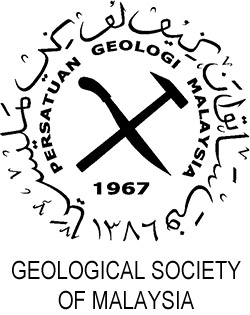
Bulletin of the Geological Society of Malaysia, Volume 43, Dec. 1999, pp. 529 – 536
1National lnstitute of Geological Sciences, University of the Philippines, Diliman 1101, Quezon City, Philippines
2Department of Petroleum Geoscience, Universiti Brunei Darussalam, Bandar Seri Begawan 2028, Negara Brunei Darussalam
3Ocean Research Institute, University of Tokyo, Nakano-ku, Minami-dai, Tokyo, Japan
Abstract: In 1991, the eruption of Mount Pinatubo, Philippines covered the South China Sea with a west-trending ash fan. The four layers studied in the central and eastern portions of the South China Sea reveal that the eruption has affected only the cores that were taken near the Island of Luzon. The study also shows that the major controls in the distribution of foraminifera in the study area include environmental stability, selective dissolution and water circulation.
https://doi.org/10.7186/bgsm43199953